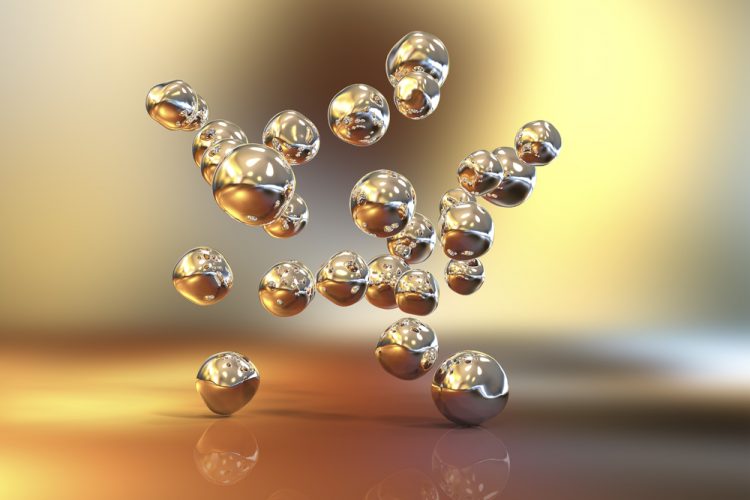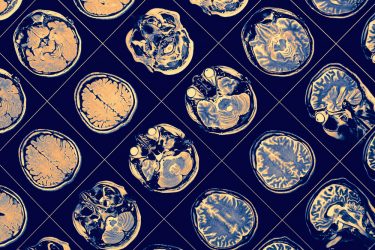Developing bioenergetic nanocatalysts, a novel approach to treat neurodegeneration
Posted: 8 March 2021 | Hannah Balfour (Drug Target Review) | No comments yet
Mark Mortenson, CSO of Clene Nanomedicine, discusses the use of proprietary gold nanocrystals as catalysts to prevent the progression of, and act as a treatment for, neurodegenerative disease.


In this article, Drug Target Review’s Hannah Balfour discusses the discovery and development of bioenergetic nanocatalysts – a new class of drugs for neurodegenerative diseases – with Mark Mortenson, Chief Science Officer at Clene Nanomedicine. His company is using an interdisciplinary approach to develop a drinkable, oral suspension of metallic gold nanocrystals to treat a range of neurodegenerative disorders including amyotrophic lateral sclerosis (ALS), Parkinson’s and multiple sclerosis (MS). Their lead candidate, CNM-Au8, is currently in Phase II trials in patients with MS and Parkinson’s and in Phase II and III trials for the prevention of ALS disease progression.
What is a bioenergetic nanocatalyst and how does it prevent neurodegeneration?
Mortenson explained that a bioenergetic nanocatalyst is a minute metallic particle – in the case of CNM-Au8, made of gold – with numerous electrons on its surface that are available for reactions. Depending on the environment, the nanoparticle can either take in excess electrons from its surroundings or give out electrons (referred to as surface plasmons by physicists like Mortenson) – oxidising or reducing the local environment in the process – to aid cellular processes and reactions.
It is well established that in neurodegenerative diseases, cellular energy production is disrupted. This has been linked to disturbances in glycolytic reactions and mitochondrial dysfunction. In both processes, electron involvement (eg, transfer) is highly important. Mortenson explained that, as a result, Clene scientists theorised that their gold nanocrystals could interact with the brain to provide electrons to facilitate these reactions.
![Microscopic image of a one of Clene's highly faceted clean-surface gold nanoparticles [Credit: Clene Nanomedicine].](https://www.drugtargetreview.com/wp-content/uploads/Clene-nanoparticle-250x250.jpg)
![Microscopic image of a one of Clene's highly faceted clean-surface gold nanoparticles [Credit: Clene Nanomedicine].](https://www.drugtargetreview.com/wp-content/uploads/Clene-nanoparticle-250x250.jpg)
Microscopic image of a one of Clene’s highly-faceted clean-surfaced gold nanoparticles [Credit: Clene Nanomedicine].
Mortenson revealed: “Each of our highly-faceted nanocrystals can exchange millions of electrons on their surface. When someone drinks two ounces (approximately 60ml) of CNM-Au8 they take in over a quadrillion gold nanocrystals, which then travel from their stomach, through the bloodstream and some reach the brain. Each of those gold nanocrystals can act as an electron bank for redox reactions, sharing, as needed, millions of electrons at a rate of, for example, 4,000 a second.
“In vitro and in vivo we have shown that these nanocrystals enhance both mitochondrial function and glycolytic reactions. Bioenergetics means we are helping naturally occurring reactions at the cellular and intracellular level that are stressed for some reason, to work better. While they cannot replace the neurons that are already lost, they improve the function of what is left behind.”
But why use gold nanoparticles when research suggests they can be toxic?
He explained that their R&D work first started in the energy field of nanotechnology, rather than nanomedicine or the use of nanotech for health. However, as they studied nanocatalysis in polymer electrolyte membrane fuel cells and hydrolysis reactions, they hypothesised that some of their discoveries – especially the ability to make clean-surfaced metallic nanocrystals that are highly-faceted and may act as catalysts for reactions – also related to biology.
one of the most remarkable aspects of using catalysts, rather than a pharmacological agent, is that they stop working once an equilibrium is reached. Therefore, it is highly unlikely the drug will over- or under-activate a pathway to the point that it becomes dangerous”
Mortenson commented: “Gold nanoparticles predate our concept of working with them; however, our two Eureka moments were we saw data on the slowed surface flow of electrons on a nanocrystal surface when polluted with a molecular surface residue and when a publication came out in 2010, stating that while 200 plus articles published to date had reported on various toxicities of gold nanoparticles to date, with results all over the map, not a single one had taken into account the method of making the nanoparticles.
“What we had discovered by this point, while working on these hydrolysis and fuel cell reactions, was that different manufacturing processes or matricies (what the gold nanocrystals grow on) result in residual particles sticking to the surfaces of the gold nanoparticles. No one had understood that the toxicity was not the gold itself, per se, but rather the residual surface chemistry that was unintentionally or intentionally put there. In some cases, people were very proud of the stability of their gold nanoparticles after they coated them with polyethylene glycol, essentially anti-freeze for your car, but failed to take into account what toxicity that was introducing in biological interactions.
“Using the methods we identified initially in our energy studies, we now make highly-faceted, therapeutic, clean-surfaced nanocrystals designed to have a particular interactions with biological targets. The clean surface is the most important thing, because it eliminates toxicity. If the surface is not clean then you will only learn how toxic a nanoparticle is once you go through all the pre-clinical and clinical drug development programmes (in vitro, in vivo, etc) and the efficacy of the nanocrystals also could change dramatically if the surfaces are not clean.”
How is CNM-Au8 performing in clinical trials?
Mortenson revealed: “Some of our most exciting results are from Phase II, brain biomarker, proof-of-target effect trials being conducted at the University of Texas, US, called Repair-MS and Repair-PD. In these trials, all participants are receiving CNM-Au8, just at different concentrations. What we are looking at is whether the treatment changes the energy metabolism patterns on the patient’s magnetic resonance spectroscopy images.


“But rather than looking at how protons are stimulated within the magnetic field, we are performing 31P (31-Phosphorous Magnetic Resonance Imaging) spectroscopy and looking at changes in amounts of phosphorus compounds, such as NAD+ (Nicotinamide Adenine Dinucleotide), NADH, PCR, PME, phosphocholine and phosphocreatines. Each patient acts as their own baseline and what we are assessing is, after being on the drug for X number of weeks, is there a change? While the trials have been disrupted by COVID-19, the interim data is fascinating. We are seeing an absolute change in the values of these phosphorus components. What is really exciting is that CNM-Au8 is acting exactly as a catalyst would – ie, in those individuals that maybe had too much of certain compounds, they now have less, while those that had too little now have more. Thus far, we have reported data through at least 12 weeks.
“In addition, we are seeing this regardless of whether they are Parkinson’s or MS patients.”
He added that one of the most remarkable aspects of using catalysts, rather than a pharmacological agent, is that they stop working once an equilibrium is reached. Therefore, it is highly unlikely the drug will over- or under-activate a pathway to the point that it becomes dangerous.
What other uses could there be for bioenergetic nanocatalysts?
“We have the capability to work with a variety of different metals, including a really cool gold alloy that cannot be made in nature. What is interesting is that, when utilising these metallic nanocrystals as catalysts in health applications, a difference of a few atoms on the surface can significantly change the energy levels of the electrons. The correct energy level is what allows various reactions to occur.
“So, there are numerous potential applications sitting on our shelves. What people who have worked on the CNM-Au8 project have realised is that the impact of these nanocatalysts is beyond just the first three neurodegenerative diseases. In fact, I may be so bold as to say most neurodegenerative diseases could probably benefit from a boost in metabolic activity when it is compromised. There is also a variety of diseases associated with ageing, including cancer, in which there is a metabolic paradigm shift and these could also be targets for Clene’s bioenergetic nanocatalysts in the future.
“I think we could eventually touch many human beings on the planet if we have enough people and financial capacity. Our company was founded with the hope to help overburdened healthcare systems worldwide with our stable liquid suspensions that may improve both health span and possibly life span.”
He added that his entire team is currently focused on the development, clinical testing and scaling up the production of Clene’s Au8 lead candidate, so these projects will have to wait.
The inspiration behind Clene Nanomedicine
In the interview, Mortenson explained that two people inspired his thinking and therefore the company. He said that Professor Rustum Roy, who started the Materials Research Laboratory at Pennsylvania State University (Penn State), taught him that the world is far more than he had been taught and, as a result, infinitely more interesting. Rustum introduced him to a whole new way of thinking: the unanswered questions were the impetus for his work.
Dr Roy also introduced Mortenson to Hans-Peter Durr, who was the vice executive director of the Max Planck Institute for Theoretical Physics at Heidelberg, who proceeded to expand Mortenson’s perspective on quantum physics. These two then introduced and included Mortenson in small discussions with several leading scientific minds and Nobel laureates, at which point Mortenson felt honored to be included!
He realised that his role was to unite the different disciplines of electrochemistry, materials science and physics with biology and to help break down artificial barriers in science even after these individuals passed away. While both passed around 10 years ago now, Mortenson emphasised that they are the reason that Clene strives to think beyond narrow areas of expertise and why the company is where it is now.
Related topics
Clinical Trials, Drug Development, Drug Discovery, Enzymes, Nanomedicine, Nanoparticles, Neurosciences, Therapeutics
Related conditions
Amyotrophic Lateral Sclerosis (ALS), Multiple Sclerosis (MS), Neurodegenerative diseases, Parkinson's disease (PD)
Related organisations
Clene Nanomedicine
Related people
Mark Mortenson (Clene Nanomedicine)








